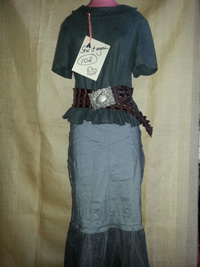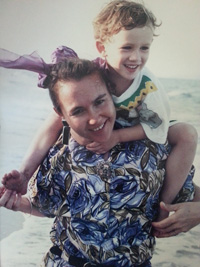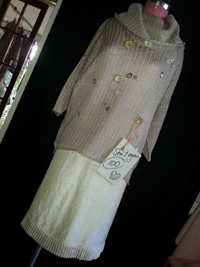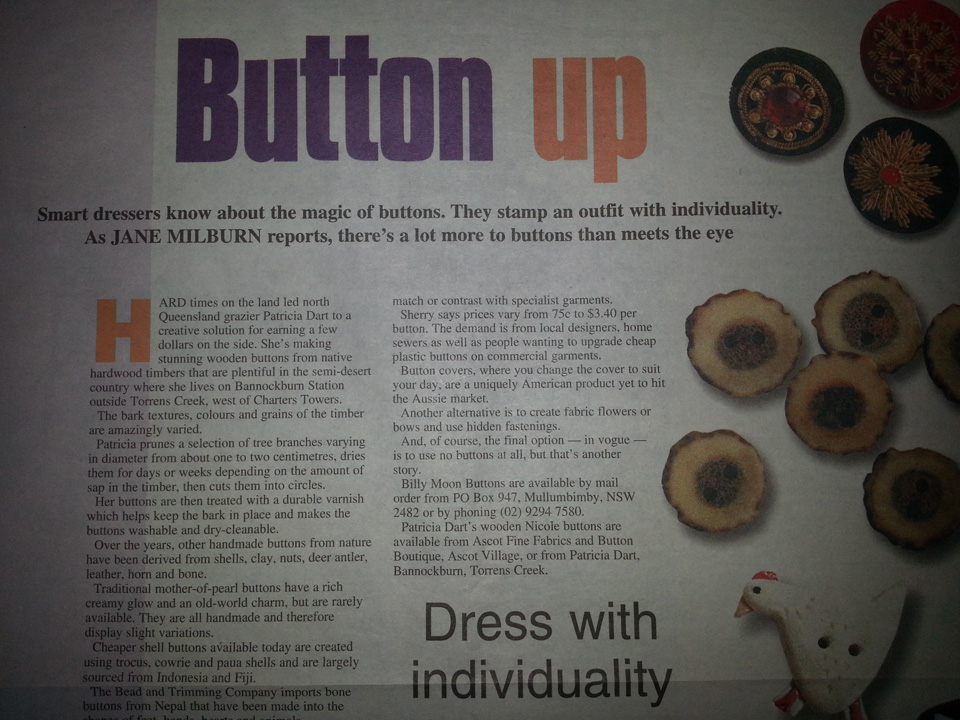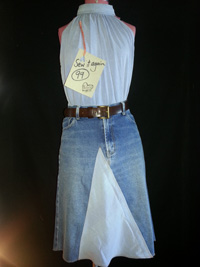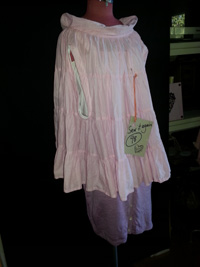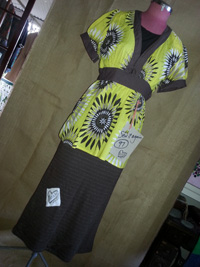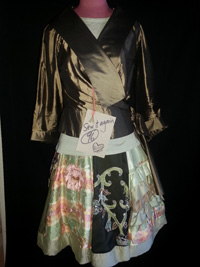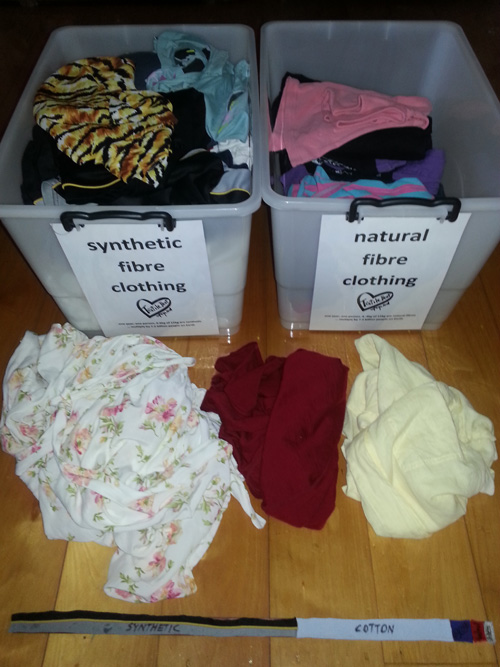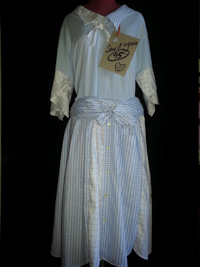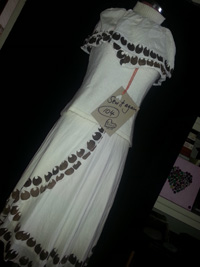 It doesn’t cost the earth to save the planet. If we all make small changes and different choices, the collective impact can be huge.
It doesn’t cost the earth to save the planet. If we all make small changes and different choices, the collective impact can be huge.
My contribution this year is demonstrating how changing existing clothing by resewing – doing a sew change – can bring new life to natural resources that for various reasons are not being worn.
My inspiration is natural beauty, such as this mushroom cum toadstool which has sprung up in our local bush after recent rain.
 Possessing a wardrobe bulging with clothing alongside a feeling of having nothing to wear is a common refrain in advanced economies. Consumer culture encourages buying new as the solution.
Possessing a wardrobe bulging with clothing alongside a feeling of having nothing to wear is a common refrain in advanced economies. Consumer culture encourages buying new as the solution.
There’s little economic imperative to reuse, resew, refashion what we already have because the machine of consumption and global supply chains mean new clothing is so cheap. Whether the purchase represents best value is another matter.
This year I’m working off-trend, sewing upstream against the tide by demonstrating how the application of a few simple sewing skills, some time and creativity we can (if so inclined) revive what we already have as an alternative to buying new.
My Sew it Again campaign comes on the back of leadership study last year and concern for the squandering of limited resources in the form of natural fibre clothing which I continue to observe within my own environment.
Working my way through 365-days of wearable upcycling, I am inspired by fabulous change happening around the world. There’s TRAIDremade in the United Kingdom, Redressed in Hong Kong and the global Fashion Revolution movement which is turning fashion into a force for good.
Today’s Sew 104 is a refashion of a hand-printed cotton garment that is a friend’s reject. No doubt lovely in its day, the waistline frill added unnecessary bulk that is unflattering for all but the slimmest. I removed the frill, turned the waistline over and inserted thin elastic to minimise bulk and provide flexible fit. I cut-up the bodice and used the printed mid-riff part to form a collar-effect on a simple cream wool-blend top. A red stain on one end of the collar is hidden underneath and it is held in place using the press-studs that were already there from its past life. I trimmed loose threads from the cut edge which had frayed after washing.
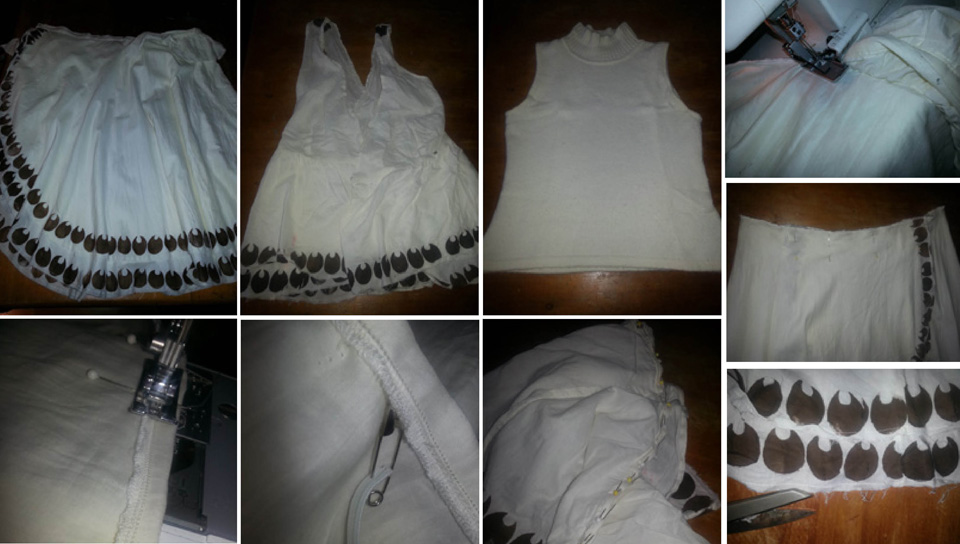
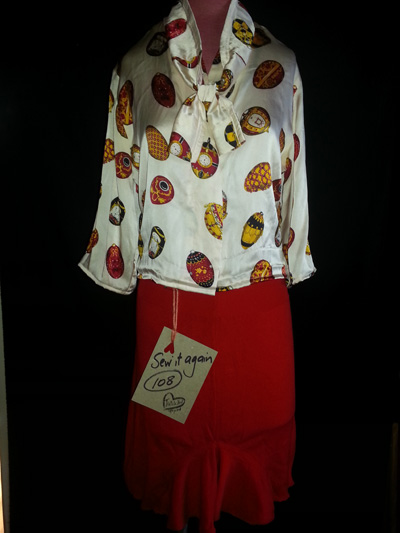 Weird, eccentric, alternative, unusual, different, unique, junky, ragged, rustic, rough, bodgie, wasted, original, rad, scrappy, yuck, quirky, bespoke, creative … adjectives describing various results from taking scissors to existing clothes and resewing them.
Weird, eccentric, alternative, unusual, different, unique, junky, ragged, rustic, rough, bodgie, wasted, original, rad, scrappy, yuck, quirky, bespoke, creative … adjectives describing various results from taking scissors to existing clothes and resewing them.


